|
Basic Components: |
|
|
|
|
|
|
CPU: |
 |
Central Processing
Unit. The most powerful microprocessor chip in your
computer is the CPU. For example the Intel Pentium chip
handles the central management functions of a
high-powered PC. Intel's newest Hyper-Threading
(technology that allows the CPU to process two separate
threads of data simultaneously) CPU supports a 1
megabyte on-board L2 cache (the on-board cache functions
as a buffer to feed data to the CPU at a faster rate).
The speed of the CPU is measured in GigaHertz (billions
of cycles per second). |
|
|
Recommendation: |
Good:
Intel Pentium Celeron D - 2.6 GigaHertz or higher.
Power User:
Intel Pentium 4 with
Hyper-Threading Technology - 3.0 GigaHertz or higher, or
Intel Pentium D - Dual Core - 3.0 GigaHerz or higher.
|
|
RAM: |
 |
Random-Access
Memory. Hardware inside your computer that
stores information while you work. RAM is one of the
things that makes your computer run faster. RAM is not
permanent storage of data. When you turn your computer
off, all data in RAM is lost. RAM is available in
different types, sizes, and speeds. Currently, depending
on the Motherboard, the Intel Celeron D CPU uses PC-2700
ram with 533 MHz FSB (Front Side Bus). The Intel Pentuim
4 HT CPU uses PC-3200 DDR (double data rate) ram with
800 MHz Front Side Bus. |
|
|
Recommendation: |
Good:
256 to 512 MegaBytes
Power User:
1 to 2 GigaBytes
|
|
Hard Drive: |
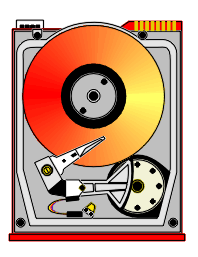 |
A Data Storage medium
that houses all of the information in your computer.
This would include your operating system (Windows),
device drivers, programs, and data you have created
using your programs (word documents, spread sheets,
etc.). Unlike RAM the Hard Drive retains data when the
computer is turned off. Hard Drives sizes are in
GigaBytes or billions of characters. EIDE hard drives
spin at a speed of 7200 RPM. Older EIDE hard drives spin
at 5400 RPM. New technology hard drives are now on the
market, and these are SATA (Serial ATA) hard drives.
Currently, these SATA hard drives have speeds
approximately the same as EIDE. Looking ahead, the SATA
hard drives will be faster and the prices will drop. The
SATA hard drives require different MotherBoard
technology to support them. |
|
|
Recommendation: |
Good:
40/80 GigaBytes (minimum) Western Digital Caviar Ultra
DMA 7200 RPM Hard Drive
Power User:
80/250 GigaBytes Western
Digital SATA Hard Drive
|
|
MotherBoard: |
 |
The main circuit board
of the computer. All key internal and external
components of your computer plug into the MotherBoard,
such as the CPU, RAM, Hard Drive, etc. The speed at
which information travels across the MotherBoard is
referred to as the BUS speed. Recently a new technology
has been introduced called PCI Express. This allows a
faster data transfer speed across the MotherBoard,
especially for video graphics. |
|
|
Recommendation: |
Good:
Asus or Intel MotherBoard with the Intel 865 Chipset
(minimum) supporting 800 MHz System Bus speed and USB
2.0
Power User:
Asus or Intel Motherboard
supporting P4 Hyper-Threading and Dual Core technology
with with PCI Express support and SATA and EIDE Hard
Drive support.
|
|
Case: |
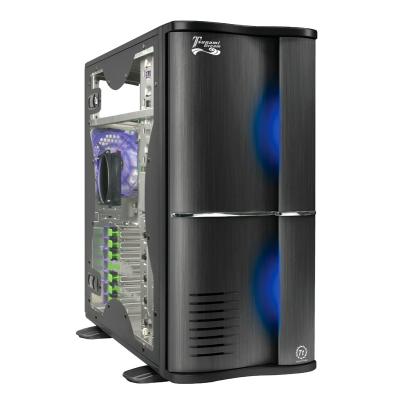 |
Often called the
"computer", the case houses and provides power to the
major computer components, including the MotherBoard,
CPU, Hard Drive, RAM, Video Card, Sound Card, etc. Those
components not housed in the computer case are usually
referred to as "peripherals". The case also houses the
power supply. It is important to have a large enough
power supply to handle your current and future needs.
Also important is that the case be large enough and have
enough ball bearing fans so the internal components do
not overheat and cause damage to themselves. Miniature
cases are to be avoided. Never put your computer
in a desk compartment or other small space where it
can't breathe. Heat is the enemy of all
computers. |
|
|
Recommendation: |
Good:
Mid or Full Tower Case with 300 Watt Power Supply
Power User:
Mid or Full Tower Case
with 420 Watt Power Supply and at least two
internal ball bearing fans. With fans, more is better.
|
|
Monitor: |
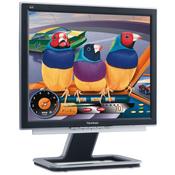 |
The video display unit
that sits on your desktop and serves as your computer
screen. Monitors are available in two basic types. The
CRT (cathode ray tube - looks like a TV set), called
"flat" or "perfect flat" and the LCD (liquid crystal
display) called "flat panel"- pictured on the left. The
LCD Flat Panel monitors are more expensive, but have a
smaller footprint on your desktop. The better LCD
monitors can support digital (better) or analog input
from the video card. With LCD Monitors we must watch
closely the "response time". This is how fast the
monitor redraws the picture. If you get a LCD with a
slow refresh rate, some video or games may be jerky to
watch.
Be careful when you
buy -
rebuilt or refurbished monitors may be called "new" and
have a one year warranty. You want a "brand new" monitor
with a three year warranty. |
|
|
Recommendation: |
Good:
17" CRT Flat or Perfect Flat model
Power User:
17" or 19" LCD with Digital and Analog inputs and 8 ms
or less response time.
|
|
Video Card: |
 |
A circuit board that
plugs into a MotherBoard slot, usually an AGP
(accelerated graphics port) slot or PCI Express slot
(newer/faster/more bandwidth) and handles multimedia
applications and graphics-intensive web sites freeing up
the CPU (thereby increasing your computers speed). The
monitor plugs into the video card which is accessed thru
a slot in the back of your computer. The better the
graphics chip on the video card, and the more ram built
on the video card, the faster the display on the
monitor. Top of the line games need very high
performance video cards. Better Video Cards have both
Digital (better) and Analog outputs.
Video Cards that
are built onto the MotherBoard and cannot be upgraded
are to be avoided. |
|
|
Recommendation: |
Good:
AGP or PCI Express Video Card with good graphics chip
(ATI) and at least 32 MegaBytes of RAM on board.
Power User:
ATI Radeon PCI Express
with at least 128 Megs of DDR (double data rate) RAM and
Digital and Analog outputs.
|
|
Speakers: |
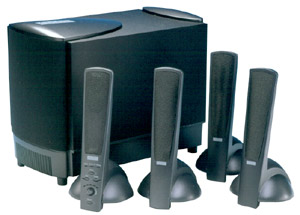 |
Produce sound (music,
voice, etc.) based on data created and sent by the sound
card. Today, computer speakers have become very high
quality and many include a sub-woofer for good bass. |
|
|
Recommendation: |
Good:
Altec Lansing stereo speakers.
Power User:
Altec Lansing 2.1 (2
stereo speakers, 1 sub-woofer) or better.
|
|
Sound Card: |
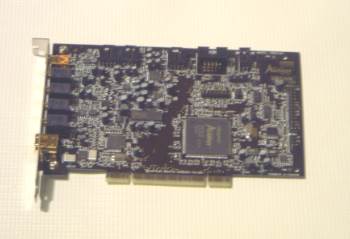 |
A circuit board that
plugs into your MotherBoard that adds audio capability
to your computer, providing high quality stereo output
to the speakers. |
|
|
Recommendation: |
Good:
Creative Labs Sound Blaster Live or Integrated Sound
Card (built on MotherBoard)
Power User:
Creative Labs Sound
Blaster Audigy II or better.
|
|
CD-ROM: |
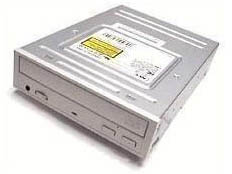 |
Compact Disk
- Read Only Memory. An optical
storage technology that stores and plays back data.
"Read Only" means the information can be displayed and
used or copied, but cannot be deleted or changed (on the
disk). One CD-ROM can hold around 650 megabytes of data,
or the equivalent of 450 floppies. The speed of a CD-ROM
refers to how fast the disk spins in the device. |
|
|
Recommendation: |
Good and Power User:
Any high quality unit with a speed or 52x. Example:
LiteOn 52x CD-ROM.
|
|
CD-Burner or DVD/CD Burner |
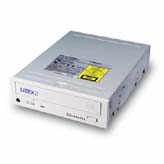 |
A CD Burner is the
informal name for a CD recorder, a device that can
record data to a compact disc. CD-Recordable (CD-R) and
CD-Rewritable (CD-RW) are the two most common types of
drives that can write CD's, either once (in the case of
the CD-R) or repeatedly (in the case of the CD-RW). In
the CD-R recording process, the data is actually etched
into the disc (burned) with a laser. In the CD-RW
process the disk must first be formatted (burned) and
then data is copied to or erased from the CD-RW media.
Almost all burners can do both tasks - record (CD-R) and
rewrite (CD-RW). The best way to determine this is from
the specs. "52x32x52a" would be a spec for a current
burner. The 52x means the record speed (CD-R), the 32x
means the rewrite speed (CD-RW) and the 52a (a =
average) means the read speed. If you have a CD-Burner,
then a separate CD-ROM is not necessary.
The DVD Burners
read, write, and re-write to DVD,s and read,
write, and re-write to CD's. If you have a DVD Burner,
then a separate CD-Burner is not necessary.
|
|
|
Recommendation: |
Good:
LiteON 52x32x52a CD-R, CD-RW, CD-ROM
Power User:
LiteOn 16x DVD-R,
DVD-RW, DVD-ROM - also supports +R, +RW, and +R Double
Layer.
|
|
Modem: |
 |
A circuit board that
plugs into your MotherBoard that enables your computer
to communicate with other computers and the Internet.
Phone lines are "analog" and computers are "digital" so
the modem has the job to MOdulate and DEModulate
between analog and digital, thus the name MODEM.
Special Note: For
today's Internet User the old telephone modems are all
but obsolete - try to obtain Cable or DSL Internet
service. |
|
|
Recommendation: |
Good and Power User:
A 56K - V.92 internal modem. The 56K refers to speed and
the V.92 refers to error correction. The error
correction is very important as phone lines get older
and lose their quality, |
|
Ethernet Card: |
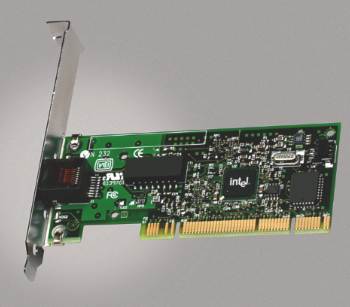 |
A circuit board that
plugs into your MotherBoard and provides the capability
to connect or "Network" your computer to other computers
and/or the Internet. If you use a cable modem, your
computer will need an Ethernet card. Ethernet cards come
in different speeds. A 10 Mbps card can transmit/receive
at 10 million bits (8 bits to a byte) per second. A
10/100/1000 Mbps card can transmit/receive at up to 1000
million bits per second. |
|
|
Recommendation: |
Good and Power User:
A 10/100/1000 Mbps Ethernet Card. Example
|
|
Keyboard: |
 |
The peripheral device
used to input information into a computer. It provides a
set of alphabetic, numeric, punctuation, symbol and
control keys. When a character is pressed, it sends a
coded input to the computer, which then displays the
character on the Monitor. Keyboards are available in
corded and wireless models. Keyboards should come with a
wrist rest. |
|
|
Recommendation: |
Good and Power User:
104 key (minimum) Keyboard with a wrist rest - either
corded or wireless. Examples: Logitech or Microsoft. |
|
Mouse: |
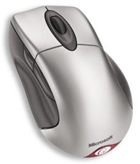 |
A peripheral device
connected to your computer, used to reposition the
cursor or move the pointer on your screen. A mouse
usually has at least two buttons, you can use to
highlight text, open menu items, launch programs, etc. A
mouse can be corded or wireless. Some mice have a ball
on the bottom that rolls as you push the mouse, and some
mice have optical function. No ball, the mouse senses
the movement by an optical beam it emits. There is no
need for a mousepad with an optical mouse. |
|
|
Recommendation: |
Good and Power User:
A high quality "optical" mouse, with at least 2 buttons,
either corded or cordless. Examples: Microsoft or
Logitech |
|
Floppy Drive: |
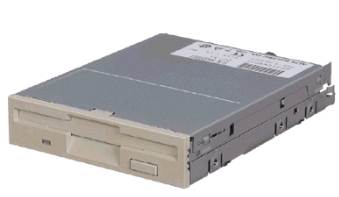 |
A device in your
computer that allows removable (a floppy disk) storage.
Data can be written to or read from a floppy disk in a
floppy drive. Each floppy disk can be removed, so you
can store data on more than one disk. |
|
|
Recommendation: |
Good and Power User:
A high quality floppy drive that accepts 3.5 inch floppy
disks. Each floppy disk should hold a minimum of 1.44
megabytes of data. |
|
Operating System: |
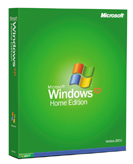 |
The foundation
software of a computer system. Responsible for
controlling and launching the installed applications and
computer peripherals. It schedules tasks, allocates
storage, handles the interface to peripheral hardware
and presents a "default" interface to the user when no
application program is running. |
|
|
Recommendation: |
Good and Power User:
Microsoft WindowsXP Home Edition with SP2 (Service Pack
2) or Microsoft WindowsXP Professional Edition with SP2.
The main difference between Home and Professional is
that Professional can network with a "domain" - or
10,000 other computers (Client/Server Environment),
while Home can only operate in a Peer to Peer networking
environment (recommended 5 computers or less). Home is
perfect for the home or small office (called SOHO -
Small Office Home Office). Professional is needed for
larger businesses and for software applications that
require Client/Server environments. WindowsXP
Professional is more expensive than WindowsXP Home.
WindowsXP Media
Center Edition is recommended for those users who want
to include full media capabilities to their computer. |